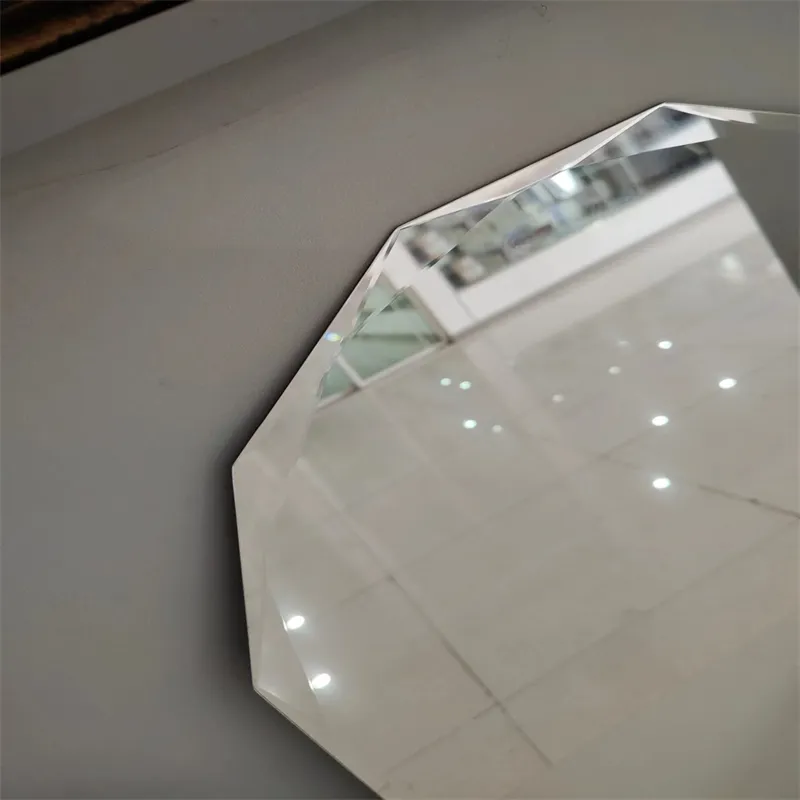Nov . 18, 2024 07:17 Back to list
Sandblasted Tempered Glass Techniques and Applications for Versatile Design Solutions
Understanding Sandblasting and Its Role in Tempered Glass Finishing
Sandblasting, a well-known method in the glass finishing industry, plays a significant role in modifying the surface of tempered glass. This technique involves propelling fine particles, typically sand, at high velocity against the glass surface using compressed air. The result is a unique aesthetic and functional enhancement that can be tailored to meet various design needs.
Tempered glass, known for its strength and safety, undergoes a rigorous heating and cooling process, allowing it to withstand greater stresses compared to regular glass. However, while its structural properties make it ideal for various applications—ranging from facades and doors to shower enclosures—the surface finish often needs enhancement to meet both visual and practical requirements. This is where sandblasting comes into play.
Understanding Sandblasting and Its Role in Tempered Glass Finishing
Beyond aesthetics, sandblasting also adds functionality to tempered glass. The process increases the surface area of the glass, which can improve adhesion in applications where the glass is bonded to other materials. This is particularly important in structural applications like glass railings or curtain walls. Additionally, a sandblasted surface can reduce glare, making it a preferred choice for spaces that require controlled lighting, such as offices or studios.
sandblasting tempered glass

Durability is another significant advantage of sandblasted tempered glass. The sandblasting process itself does not compromise the inherent strength of the glass. Instead, it creates a robust surface that is resistant to scratches and other forms of damage. This is vital in high-traffic areas, where durability and ease of maintenance are paramount.
Moreover, sandblasted tempered glass is also an effective way to enhance privacy without sacrificing natural light. Ideal for settings like bathrooms or conference rooms, the frosted effect created by sandblasting obscures visibility while still allowing light to filter through. This balance between transparency and seclusion makes sandblasted glass a popular choice in modern design.
However, it is essential to consider the potential drawbacks. While sandblasting is a versatile and effective finishing technique, the rough surface can make cleaning more challenging compared to polished glass. Therefore, selecting the appropriate finish involves a careful evaluation of the intended application and the maintenance requirements.
In conclusion, sandblasting is a valuable process in the treatment of tempered glass, providing aesthetic appeal, enhanced durability, and functional benefits. Its ability to create custom finishes allows architects and designers to push creative boundaries. As the demand for innovative glass solutions continues to rise, understanding the implications and benefits of sandblasting will remain essential for both manufacturers and consumers alike. Whether used in commercial spaces or residential homes, sandblasted tempered glass undoubtedly enhances the beauty and functionality of our built environments.
-
Safety and Style with Premium Laminated Glass Solutions
NewsJun.24,2025
-
Reinvents Security with Premium Wired Glass
NewsJun.24,2025
-
Premium Float Glass Line for Modern Architecture
NewsJun.24,2025
-
Low Emissivity Glass for Energy-Efficient Architecture
NewsJun.24,2025
-
High-Performance Insulated Glass Solutions for Modern Architecture
NewsJun.24,2025
-
Elevates Interior Style with Premium Silver Mirror
NewsJun.24,2025
Related PRODUCTS














